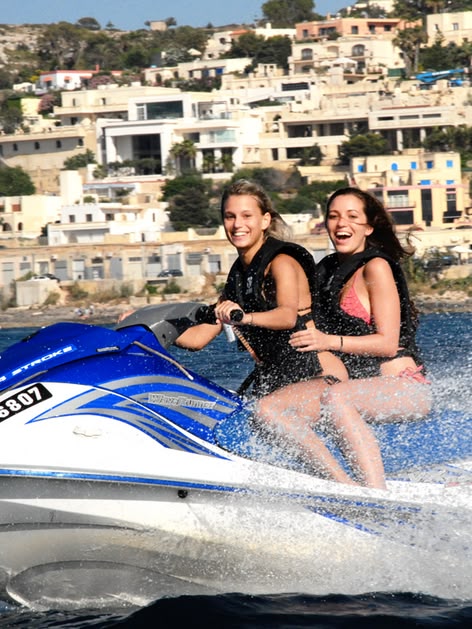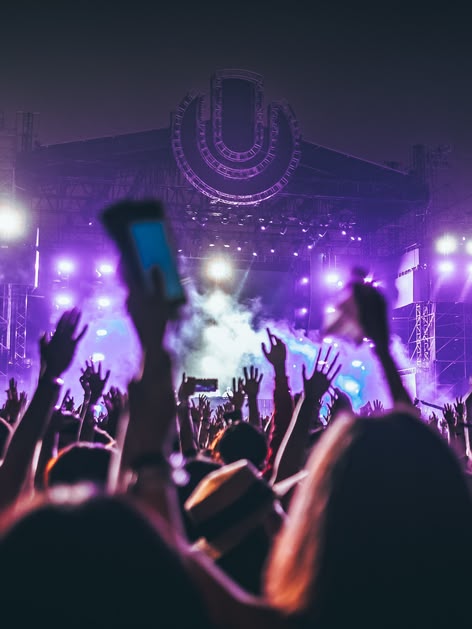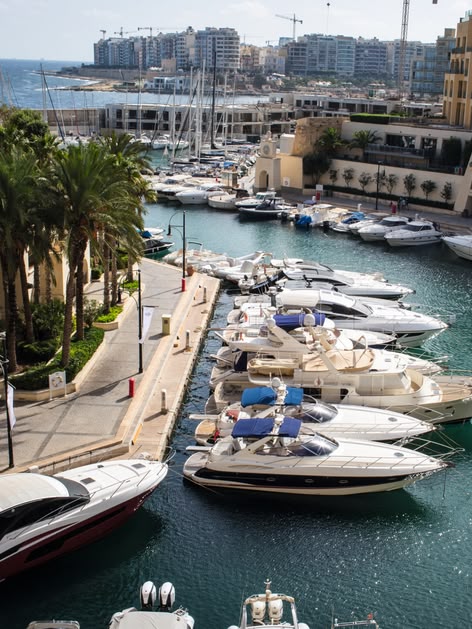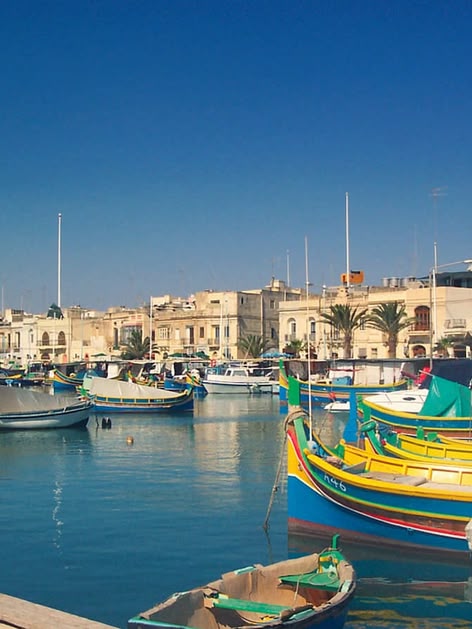13 Essential Things to Know Before Travelling to Malta
1. Geography of Malta
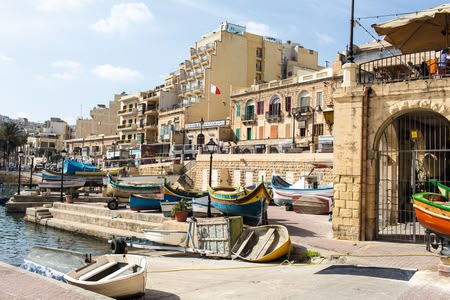
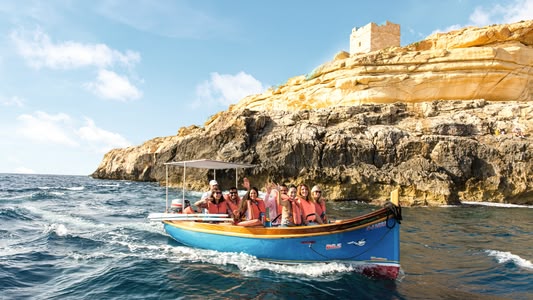
The Maltese archipelago consists of three main islands: Malta, Gozo, and Comino. Malta, the largest island, is the main centre of political, cultural, and tourist life. Gozo, smaller and greener, attracts tourists seeking tranquillity and natural landscapes. Comino, the smallest, is famous for its beautiful beaches and turquoise waters, making it a paradise for diving and water sports enthusiasts. With only about 530,000 inhabitants, Malta is one of Europe's smallest and most densely populated countries.
Mediterranean Climate
Malta enjoys a Mediterranean climate, meaning warm, dry summers and mild, wet winters. This makes it a popular destination year-round. Summer temperatures often exceed 30 oC, ideal for seaside holidays. Winters are mild, rarely dropping below 10 °C, making Malta attractive even during the pre- and post-holiday seasons.
Landscape Characteristics
Malta's landscape is diverse, offering both majestic cliffs (especially on the west coast) and charming beaches. The Blue Lagoon on Comino is one of the most famous spots. Malta also boasts numerous caves, with the Blue Grotto being the most renowned, where tourists can take boat trips.
2. Historical Context
Malta is a true treasure trove of history, with every era leaving its mark due to its strategic location at the crossroads of trade routes.
Rich History and Early Influences
Malta was inhabited in prehistoric times, evidenced by megalithic temples like Ħaġar Qim and Mnajdra-among the oldest freestanding structures in the world. Over the centuries, the archipelago was ruled by various civilisations. The Phoenicians and Carthaginians first settled there. In 218 BCE, Malta became part of the Roman Empire. The Arab rule in the 9th century left a lasting impact on the language and culture, introducing new irrigation methods and influencing Maltese vocabulary.
The Order of St. John (Knights of Malta)
The most famous period is the rule of the Knights Hospitaller, who received the islands in 1530. The Knights transformed Malta into an impregnable fortress and played a crucial role in halting the Ottoman Empire's expansion during the Great Siege of 1565. They founded Valletta, named after Grand Master Jean de la Valette.
British Era and Independence in 1964
Malta became part of the British Empire in 1814, serving as a key military point, especially during World War II. The island gained independence in 1964 and was proclaimed a republic in 1974. Today, Malta is a sovereign parliamentary republic and a member of the European Union (since 2004) and the Schengen Area (since 2007).
Knowing Malta's history offers insight into the resilience, culture, and courage of its inhabitants.
3. Climate and Weather - When is the Best Time to Visit Malta?
Due to the Mediterranean climate, winters are mild, and summers are hot and dry. Each season offers a different experience.
| Season | Timeframe | Temperatures | Typical Experience |
| Winter | December–February | 10 oC to 15 oC | Ideal for sightseeing (Valletta, Mdina), lower prices, fewer crowds. Rain possible. |
| Spring | March–May | 18 oC to 25 oC | One of the best times: pleasant temperatures, blooming landscape, ideal for hiking and exploring nature (Dingli Cliffs). |
| Summer | June–August | Up to 35 oC | Peak season, best for beaches and water sports (Blue Lagoon, Golden Bay). Sun protection essential. |
| Autumn | September–November | 20 oC to 30 oC | Second golden period: warm weather continues, crowds dissipate, sea remains warm for swimming. |
4. Must-See Cities and Attractions
Valletta
The capital and a UNESCO World Heritage site, Valletta, was founded in the 16th century by the Knights Hospitaller. It serves as a fortress and administrative centre, featuring impressive fortifications and Baroque architecture.
Key attractions:
- St. John's Co-Cathedral: A masterpiece of Baroque architecture with Caravaggio's paintings.
- Barrakka Gardens: Perfect for relaxation with views of the Grand Harbour and the Three Cities.
- Valletta Waterfront: A promenade with restaurants.
- Access: The main transport hub for buses; ferries run from Sliema and the Three Cities.
Mdina
Known as the "Silent City," the former capital is a charming place full of medieval and Baroque buildings. Its cobbled streets, stone façades, and lack of cars create a magical atmosphere. Visitors can enjoy panoramic views of the island from the defensive walls.
Key attractions:
- St. Paul's Cathedral: A beautifully adorned temple.
- Mdina Bastions: Offering panoramic views.
- Access: Regular buses from Valletta.
Marsaxlokk
A charming fishing village in the south, known for its authentic, traditional character and colourful luzzu boats. The Sunday fish market is a major draw. Nearby is St. Peter's Pool, a rocky inlet with clear water ideal for snorkelling.
Access: Buses from Valletta.
Birgu (Vittoriosa)
One of the historic Three Cities, Birgu is a captivating fortified city on the southern side of the Grand Harbour.
Key attractions:
- Inquisitor's Palace: A museum showcasing the Inquisition's activity in Malta.
- Fort Saint Angelo: A crucial fortification during the Knights' rule.
- Access: Easy to reach by bus or ferry from Valletta.
Sliema and St. Julian's
Modern, lively cities popular with tourists for their infrastructure, nightlife (especially Paceville in St. Julian's), and shopping (The Point Shopping Mall in Sliema). The Sliema promenade offers views of Valletta.
Access: Frequent buses from Valletta and the airport.
Rabat
A historical town adjacent to Mdina, offering attractions related to Christian culture and ancient history.
Key attractions:
- St. Paul's Catacombs: An extensive underground complex from Roman times.
- St. Agatha's Catacombs: Smaller, with ancient frescoes.
- Access: Regular public buses from Valletta or Sliema.
Żebbuġ and Qormi
- Żebbuġ: One of the oldest towns, known for its authentic character, local traditions, religious festivals (festi, especially the feast of St. Philip in June), and traditional sweets like imqaret.
- Qormi: The "City of Bread," with a long baking tradition. The annual Qormi Bread Festival and traditional bakeries, where you can try ħobż tal-Malti (Maltese bread), are highlights.
Best time to visit:
- For beaches and water activities: June-August.
- For sightseeing and avoiding crowds: March-May and September-November.
- For tranquillity and low prices: December-February.
Flights from Poland
Direct flights to Malta are available from several Polish cities, especially during the tourist season (spring-summer). Major airports offering direct connections include Warsaw (Chopin), Kraków, Gdańsk, Katowice, Poznań, and Wrocław. The flight time is approximately 2 hours and 45 minutes.
5. Activities Outside the City
Malta's natural environment offers many active and unforgettable experiences.
Blue Lagoon on Comino
Famous for its turquoise, crystal-clear water, this spot is perfect for snorkelling and swimming.
Access: Regular ferries and boat trips from Cirkewwa (Malta) and Mgarr (Gozo).
Dingli Cliffs
The highest point of the island, on the west coast, offering spectacular views of the sea and coast. Ideal for hiking and sunset viewing.
Access: Easily reachable by car or bus from Rabat.
Beaches: Golden Bay and Mellieha Bay
- Golden Bay: Popular sandy beach surrounded by cliffs, great for water sports.
- Mellieha Bay: Malta's largest beach, excellent for families due to shallow waters.
Access: Regular buses from Valletta and Sliema.
Blue Grotto
A complex of sea caves on the south coast where the waters reflect blue light, creating magical visual effects.
Access: Boat trips depart from a small harbour near the town of Żurrieq.
Gozo Island
Malta's quieter sister, known for greener hills, picturesque villages, and unique rock formations like Wied il-Mielaħ (a natural arch). Ramla Bay has red sand. Its capital is Victoria with its Citadel.
Access: Regular 25-minute ferries from Cirkewwa.
Nature and History
- Majjistral Nature and History Park: Features cliffs, hiking trails, and historical sites on the northwest coast.
- Għadira Nature Reserve: A popular reserve for migrating birds near Mellieha Bay.
- Marsalforn Salt Pans (Gozo): Unique salt pans still used for sea salt production, creating a beautiful landscape.
6. Festivals and Events
Malta has a rich calendar of events, ranging from traditional cultural festivities to music festivals.
- Malta Carnival (February): Streets in Valletta and Nadur (Gozo) come alive with colourful parades and music.
- Isle of MTV (Summer): A large open-air music event attracting international stars.
- Festa (Parish Feasts): An integral part of Maltese culture. Each village celebrates its patron saint with processions, band performances, and spectacular fireworks.
- Malta Jazz Festival (July).
Malta is a predominantly Catholic country, with religion playing a significant role in social life, evident in the numerous churches and grand religious celebrations.
7. Maltese Cuisine: What to Eat?
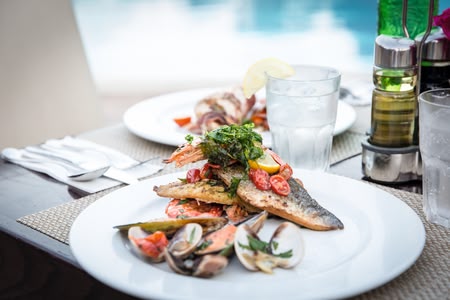
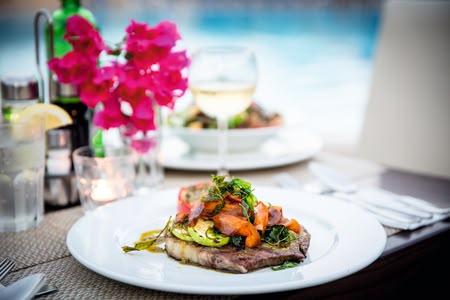
Maltese cuisine is a fusion of Mediterranean, Arab, Italian, and British influences, relying on fresh, local ingredients.
Snacks and Quick Bites
- Pastizzi: Small, crispy pastry pockets filled with creamy ricotta cheese or a pea paste. Very inexpensive (around 1 euro).
- Ħobż biż-Żejt: Traditional Maltese sandwich of bread dipped in olive oil, served with tomatoes, capers, tuna, and olives.
- Bigilla: A broad bean or fava bean paste seasoned with garlic and oil, served with crackers.
Main Courses
- Fenkata: Rabbit stew, considered Malta's national dish. The rabbit is slow-cooked in red wine with garlic and herbs. Best found in rural restaurants, notably in Mgarr.
- Timpana: A baked pasta dish with a tomato and minced meat sauce, all encased in puff pastry.
Fish and Seafood
- Lampuki: Local seasonal fish (also known as Dorado or Mahi-Mahi), often baked or served in a pie.
- Stuffat tal-Qarnit: Octopus stewed in a tomato sauce with herbs.
The best seafood can be found in the harbour-side restaurants of Marsaxlokk.
Soups and Desserts
- Aljotta: Traditional fish soup with tomatoes, garlic, and rice.
- Imqaret: Deep-fried date pastries, often served warm with vanilla ice cream.
Example Food Prices: Pastizzi (€0.50-€1), restaurant main course (€15-€20), coffee (€1.50-€2).
8. Maltese Beverages
It's worth sampling local drinks that reflect the Mediterranean culture.
- Kinnie: The iconic Maltese soft drink with a bittersweet flavour, made from bitter oranges and a blend of herbs. Best served chilled.
- Maltese Wines: Malta has a winemaking tradition, with local grape varieties like Gellewza (red) and Girgentina (white) gaining international recognition.
- Cisk Lager: The most popular local beer.
- Fig Liqueur: A sweet liqueur made from the fruit of the prickly pear cactus.
Note: Drinking alcohol in public places is officially prohibited, especially in Valletta and St. Julian's, with fines up to €235.
9. Transport Tips
Despite its small size, Malta offers various transport options to reach key tourist attractions.
Public Transport (Buses)
Buses are the main mode of transport, offering a well-developed network covering most tourist locations.
- Single Ticket (2 hours validity): €2 in summer, €1.50 off-season.
- 7-Day Explore Card (unlimited travel): €21 for adults.
Note: Buses can be crowded during peak hours, and schedules are not always precise.
Car/Scooter Rental
Renting a car (from €20-€40 per day) or a scooter (from €15-€30 per day) offers flexibility to explore less accessible areas like the Dingli Cliffs.
Important: Driving is on the left (left-hand traffic), which may take some time to adjust to. Parking can be challenging in popular areas.
Water Transport
Water transport is crucial in the archipelago:
- Ferries (Malta-Gozo): Frequent service between Cirkewwa and Mgarr. Price is about €4.50 (foot passenger).
- Water Taxis/Ferries: Connect Valletta to Sliema or the Three Cities (around €2-€3 per trip).
- Boat Trips: Full-day excursions, including the Blue Lagoon, range from €25 to €50.
Taxis and Ride-Hailing
Traditional taxis can be expensive (€15 for a 10km ride). Bolt and Uber are available and often offer more affordable and convenient options.
10. Language and Culture
Malta has two official languages: Maltese (a Semitic language with Italian and English influences) and English. Most locals are fluent in English, making communication easy for tourists.
Useful Maltese Phrases
While English is widely spoken, using a few Maltese phrases can be appreciated:
- Hello / Good morning: Ħelow / Bongu
- Goodbye: Sahha
- Thank you: Grazzi
- Please: Jekk jogħġbok
- Excuse me: Skużani
- Yes / No: Iva / Le
- Where is...?: Fejn hu...?
- How much does it cost?: Kemm tiswa?
- Do you speak English?: Titkellem bl-Ingliż?
Hospitality of the Locals
The Maltese are known for their openness and hospitality. They are generally helpful towards tourists, and their friendly nature enhances the visitor experience. A noticeable aspect of local life is the deeply rooted religiousness, evident in the numerous churches and lively local festi (religious feasts).
Sample Prices in Malta
| Category | Item | Estimated Price |
| Food & Drink | Dinner in a local restaurant | €15–€20 per person |
| Quick snack (Pastizzi) | €0.50–€1.00 | |
| Local beer (e.g., Cisk) | €2.50–€4.00 | |
| Coffee | €2.00–€3.00 | |
| Attractions | St. John's Co-Cathedral | €15 |
| Fort Saint Elmo (National War Museum) | €10 | |
| St. Paul's Catacombs (Rabat) | €6 | |
| Boat trip to Blue Grotto | €8–€10 | |
| Ħal Saflieni Hypogeum (Must book ahead) | €35 |
11. Currency and Prices in Malta
As a member of the European Union, Malta uses the Euro (€), which is convenient for tourists from other EU countries. The island caters to both budget travellers and those seeking luxury.
Payments in Malta
Card payments (Visa, Mastercard) are widely accepted in shops, restaurants, and hotels. However, it is advisable to carry some cash for smaller transactions and payments in less urbanised areas. ATMs are easily accessible in major towns like Valletta, Sliema, and St. Julian's.
Daily Budget
- Budget Traveller: €40-€60 per day (public transport, local snacks, basic attractions).
- Standard Tourist: €70-€120 per day (mid-range dining, multiple attractions).
- Luxury Traveller: From €150 upwards.
Note: Direct exchange of Polish Złoty (PLN) to Euro is difficult in Malta. It is recommended to exchange currency before travel or use an international ATM with a multi-currency card.
12. Nature and Environmental Protection
Despite its small size, Malta's nature offers surprising diversity and beauty. Exploring its natural areas is highly recommended, but adhering to environmental protection rules is essential.
National Parks and Reserves
- Għadira Nature Reserve: A vital reserve near Mellieha Bay for migrating birds, offering a quiet escape for ornithology enthusiasts.
- Buskett Gardens: One of Malta's few wooded areas, popular for picnics and finding shade during the summer.
- Majjistral Nature and History Park: Covers the northwest coast, offering hiking trails and spectacular views of cliffs and the Mediterranean Sea.
Environmental Rules
Malta strives to protect its natural resources. Visitors must observe the following:
- Beach Regulations: Littering is prohibited on many beaches, as is collecting stones or sand.
- Protected Sites: Areas like the Blue Grotto and Dingli Cliffs are protected. Trespassing or damaging nature is subject to penalties.
Minimising Ecological Footprint: Avoiding single-use plastics and supporting local products helps reduce environmental impact.
13. Potential Challenges and Preparation
Malta is a safe country with a low crime rate. However, tourists should be aware of a few potential issues and prepare accordingly.
Safety and Traffic
- Petty Crime: Be cautious of pickpockets in crowded tourist areas.
Driving: Traffic is left-hand drive, and the driving style can be assertive. Exercise caution when driving or crossing roads.
Document Issues
If documents (passport/ID card) are lost, assistance is available from the Embassy of the Republic of Poland in Valletta.
Procedure: Report the loss to the police first. The Embassy can help secure a temporary identity document.
Visa Requirements: EU citizens only require a valid ID card or passport. Non-EU citizens must check current visa regulations.
Health Issues
Malta offers high-quality healthcare.
- Health Insurance: Tourists should contact their travel insurance provider for medical assistance procedures.
- EHIC (European Health Insurance Card): EU citizens with a valid EHIC can access public healthcare in Malta on the same terms as Maltese nationals.
Emergency: In case of emergency, call 112. The main public facility is Mater Dei Hospital.
Tips for a Smooth Trip
- Avoid Peak Season (July-August) if you dislike crowds.
- Sun Protection: The summer sun is intense; essential items include high-SPF sunscreen, a hat, and staying hydrated.
- Book Ahead: During the high season, advance booking is necessary for popular attractions (like the Hypogeum or Blue Lagoon tours) and accommodation.
- Public Transport: Be prepared for potential delays and overcrowding during peak season. Consider renting a car or scooter for intensive sightseeing.
- Footwear: Comfortable shoes are essential due to the uneven terrain, from Valletta's cobblestones to the Dingli Cliffs.
Note on Roaming: EU roaming rules apply, allowing tourists from the EU to use their phones under the same conditions as in their home country, though data limits should be checked.
Inspiration for Your Trip
Malta has long been a source of inspiration for artists and filmmakers, lending a unique atmosphere to the island.
Literary and Film Works Featuring Malta
Malta has provided the backdrop for numerous famous productions:
- Gladiator (2000), Troy (2004), Alexander (2004): Scenes were filmed at Fort Ricasoli.
- Game of Thrones (2011): The pilot was filmed on the island, including the wedding scene at the former Azure Window on Gozo.
- Munich (2005): Malta stood in for Greece and Israel.
- Assassin's Creed (2016): Filmed in Mdina and Fort Manoel.
- Popeye (1980): The musical starring Robin Williams was filmed at Popeye Village, now a tourist attraction.
Literary works include Nicholas Monsarrat's The Kappillan of Malta (about WWII) and classic novels like Walter Scott's The Siege of Malta.
Social Media and Channels
For up-to-date information and inspiration, follow official and popular travel channels:
- @visitmalta (Official Malta Tourism Authority profile on Instagram and YouTube).
- MALTA travel GUIDE (Facebook - offers licensed tours).
- Travel Malta (YouTube - oldest active channel on Malta).
Souvenir Ideas
When packing for the return journey, consider bringing back local crafts such as:
- Lace and Jewellery
- Mdina Blown Glass
- Prickly Pear Liqueur
- Maltese Wine
- Traditional Sweets (e.g., Nougat)
Malta is an extraordinary destination that blends rich history, stunning nature, and unique culture. Whether you are strolling through the streets of Valletta, admiring the views from Dingli Cliffs, relaxing in the Blue Lagoon, or savouring local pastizzi and lampuki, you will discover the captivating charm and warm hospitality of this Mediterranean archipelago.

